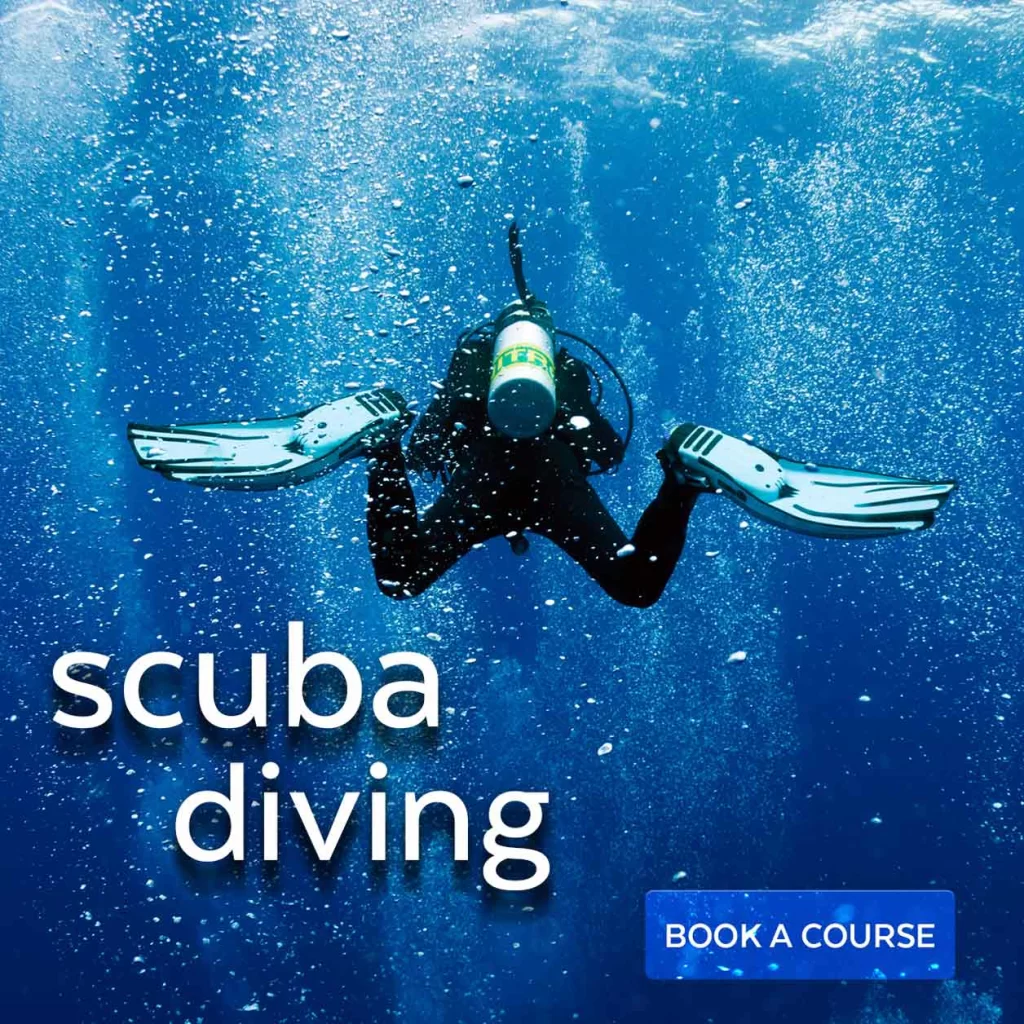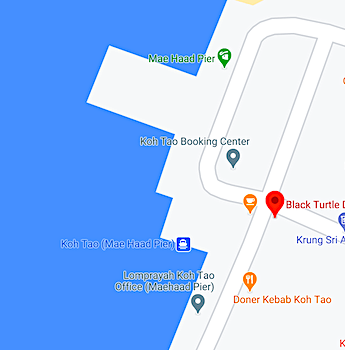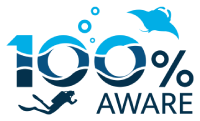Sea Turtle Ecology Course in Thailand
Learn Sea Turtle Ecology in Koh Tao, Thailand
Scuba divers love to discover sea turtles when they go scuba diving. Sea turtles are gentle giants of the ocean, and are often seen swimming leisurely through the water, resting within coral reefs or eating their favourite snacks.
They are also very curious creatures and will often approach divers to investigate them, and seeing a sea turtle in its natural habitat is truly a magical experience that scuba divers never forget.
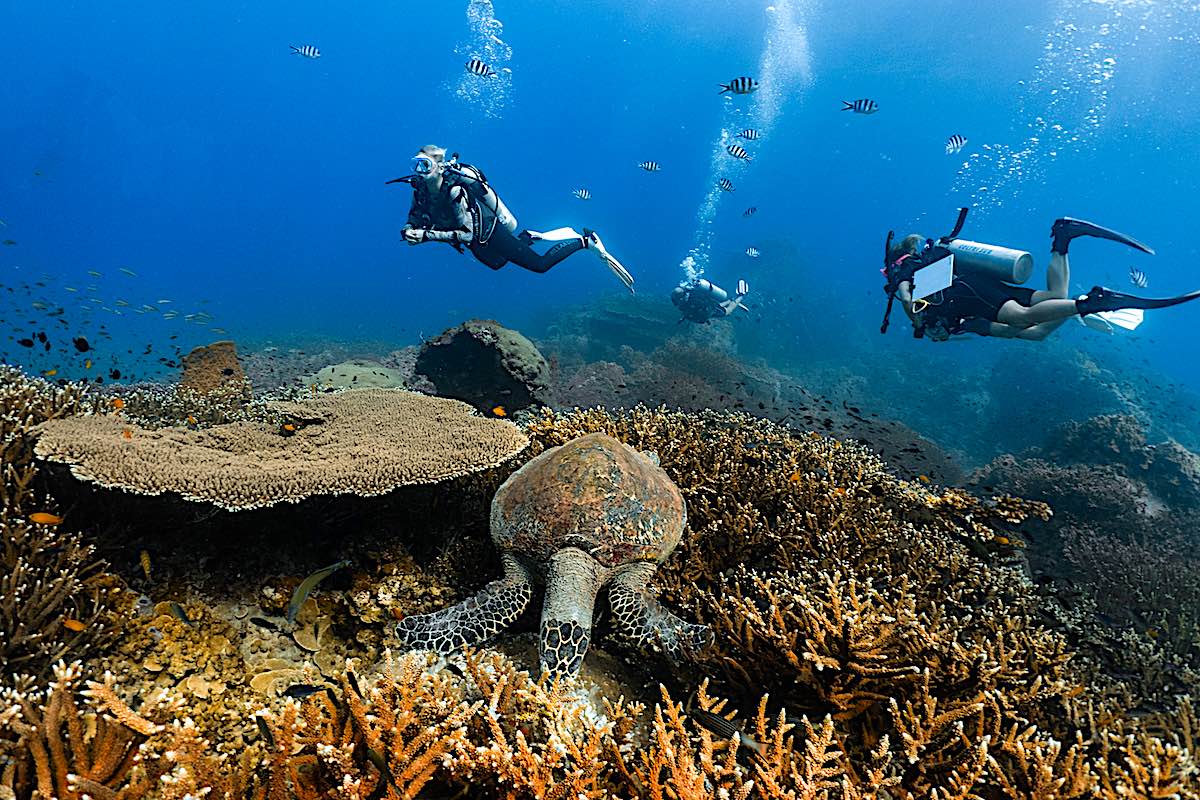
Discover Sea Turtles on Koh Tao
Koh Tao is known as “Turtle Island” as the first settlers believed the island looked like a turtle when approached from the south and because of the large number of sea turtles that reside in the local marine environment.
Sea turtles can be seen on Koh Tao at many of the popular dive sites and especially around Shark Bay, Hin Wong Bay, and Aow Leuk Bay.
It is important to remember that sea turtles are endangered marine animals and should be treated with enormous respect, and for this reason we ask all our customers to sign our Environmental Guidelines and Code of Conduct to ensure that sea turtles (or any marine life) are not disturbed.
Save our Sea Turtles
Sea Turtles are a charismatic and ecologically important species that have lived on the planet for more than 100 million years. There are seven species of sea turtles, six of which are endangered and some sea turtle populations have been reduced by as much as 98%!
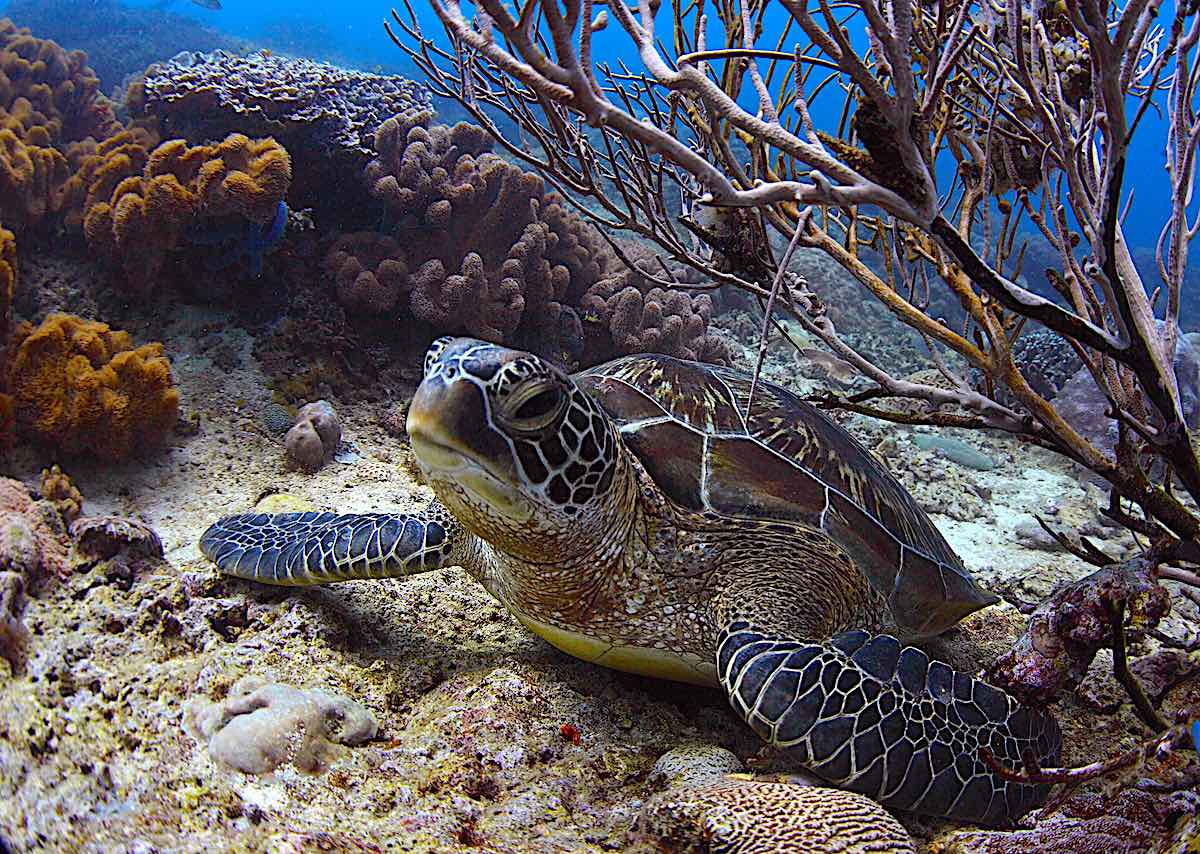
Sea Turtles are Important for Marine Ecosystems
Two of those species, the Green Sea Turtle and the Hawksbill Sea Turtle are frequent visitors to many of the dive sites around Koh Tao.
There have also been occasional sightings of the Olive Ridley Sea Turtle around Koh Tao and the Leatherback Sea Turtle has been seen within the Gulf of Thailand.
Sea turtles play an important role in marine ecosystems and their preservation is crucial for maintaining healthy oceans.
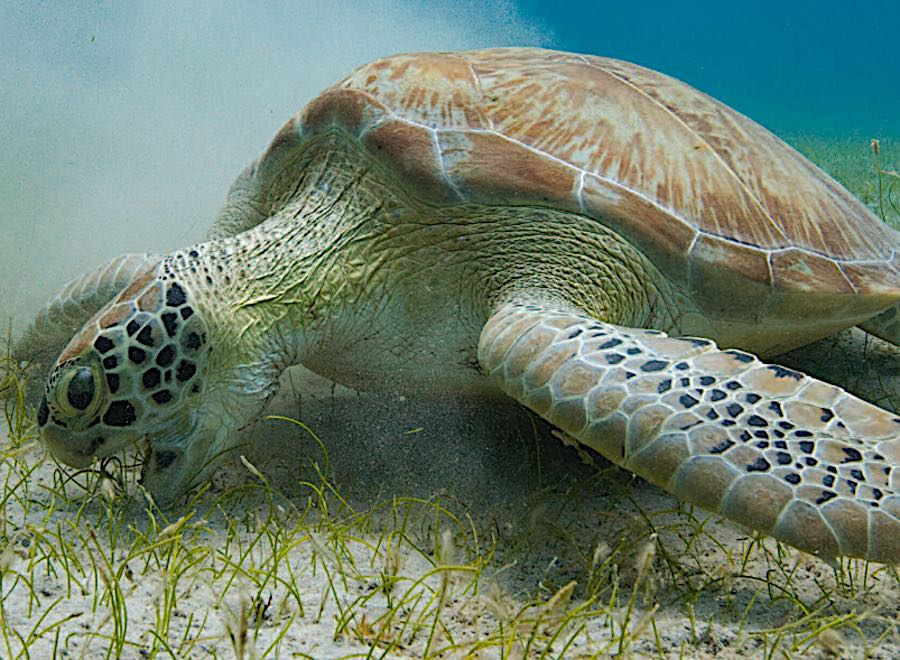
Sea Turtle Ecology – a crucial role in maintaining healthy Oceans.
- Grazing on Seabeds: Green Turtles are known to graze on seagrass, which helps by removing old leaves, and allowing new growth. Healthy Seagrass beds provide important habitat for other marine life species such as fish and invertebrates.
- Transporting nutrients: Sea Turtles play a role in transporting nutrients from the ocean to the beaches where they lay their eggs. The nutrients in their eggs provide nourishment for scavengers and predators on the beach and the hatched turtles carry nutrients back into the ocean as they grow and develop.
- Controlling Jellyfish Populations: Leatherback Turtles are known to feed on Jellyfish, which helps control Jellyfish populations. This is especially important in areas where Jellyfish blooms can be harmful to human activities, fishing and tourism.
- Providing Food for Predators: Sea Turtles are an important food source for many predators including sharks and crocodiles. These predators help maintain a balance in the marine food web and their presence can be an indicator of a healthy ecosystem.
- Maintaining healthy coral reefs: Hawksbill Turtles are known to feed on sponges, which if left unchecked, can overgrow and damage coral reefs. By keeping Sponge populations under control, Hawksbill Turtles help to maintain healthy coral reef ecosystems.
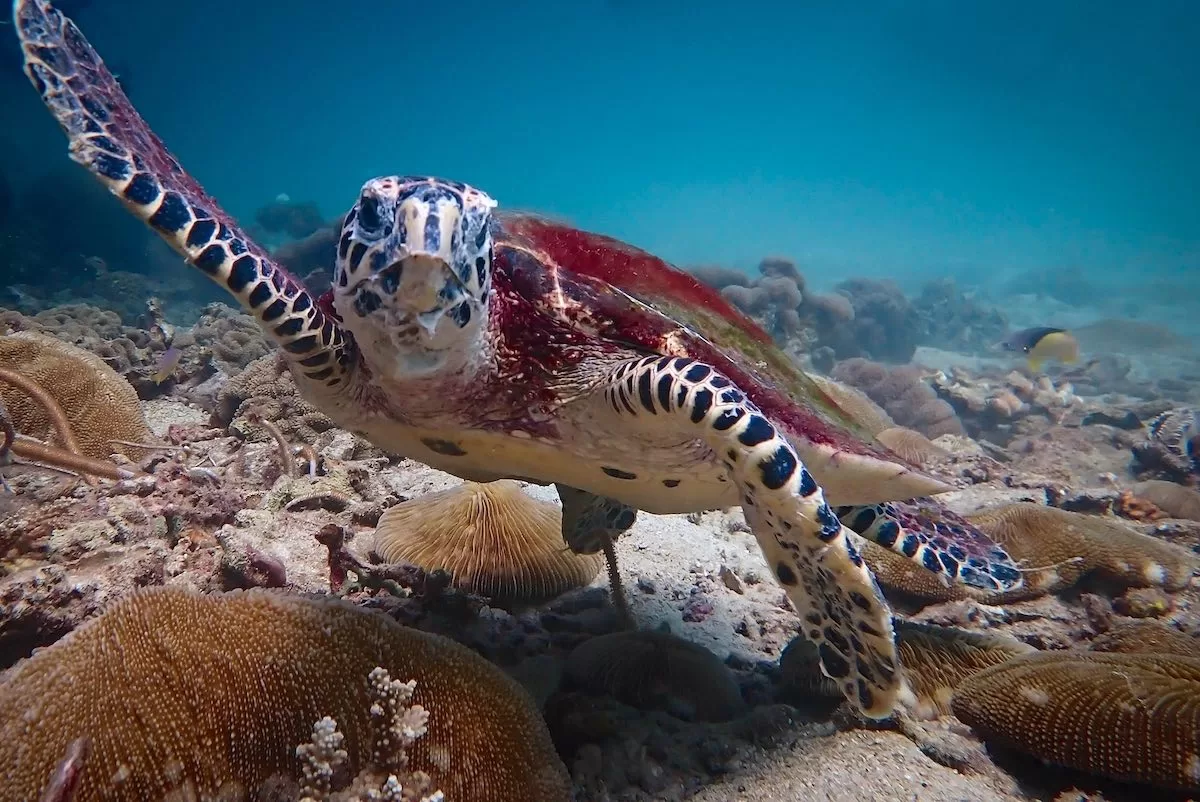
Threats to Sea Turtles in Thailand
Unfortunately, Sea turtles face a range of threats, both natural and human-induced, which are putting their populations at risk. Some of the main threats include:
- Habitat loss due to coastal development including the construction of buildings, roads and beachfront resorts, which can damage sea turtle habitat.
- Climate change means increased ocean temperature and rising sea levels. More frequent and severe storms that can change sea turtle nesting shelters, disrupt food sources and damage nesting beaches and coastal habitats.
- Pollution means lots of marine debris such as plastic bags and fishing equipment, which can entangle and suffocate sea turtles. Chemical pollutants such as oil spills and run off from agricultural and industrial activities can contaminate sea turtle habitats and affect their health.
- Overfishing of sea turtle food sources such as Jellyfish and shellfish can negatively impact sea turtle populations. Sea Turtles can also become accidentally caught in fishing equipment such as trawler nets and longlines, and drown.
- Sea turtles are hunted for their meat, eggs and shells that are sold onto the black market for human consumption, traditional medicine and decoration by poachers. Poaching Sea turtle eggs also significantly reduces population numbers.
- Coastal lighting can cause disorientation to hatchlings causing them to crawl away from the ocean and become prey or die from dehydration on land.
All of these threats, combined with the fact that sea turtles have low reproductive rates and a long lifespan, make them vulnerable to population declines and extinction.
Conservation efforts such as habitat protection, fishing equipment regulations, and anti-poaching laws, are crucial for the survival of these incredible creatures.
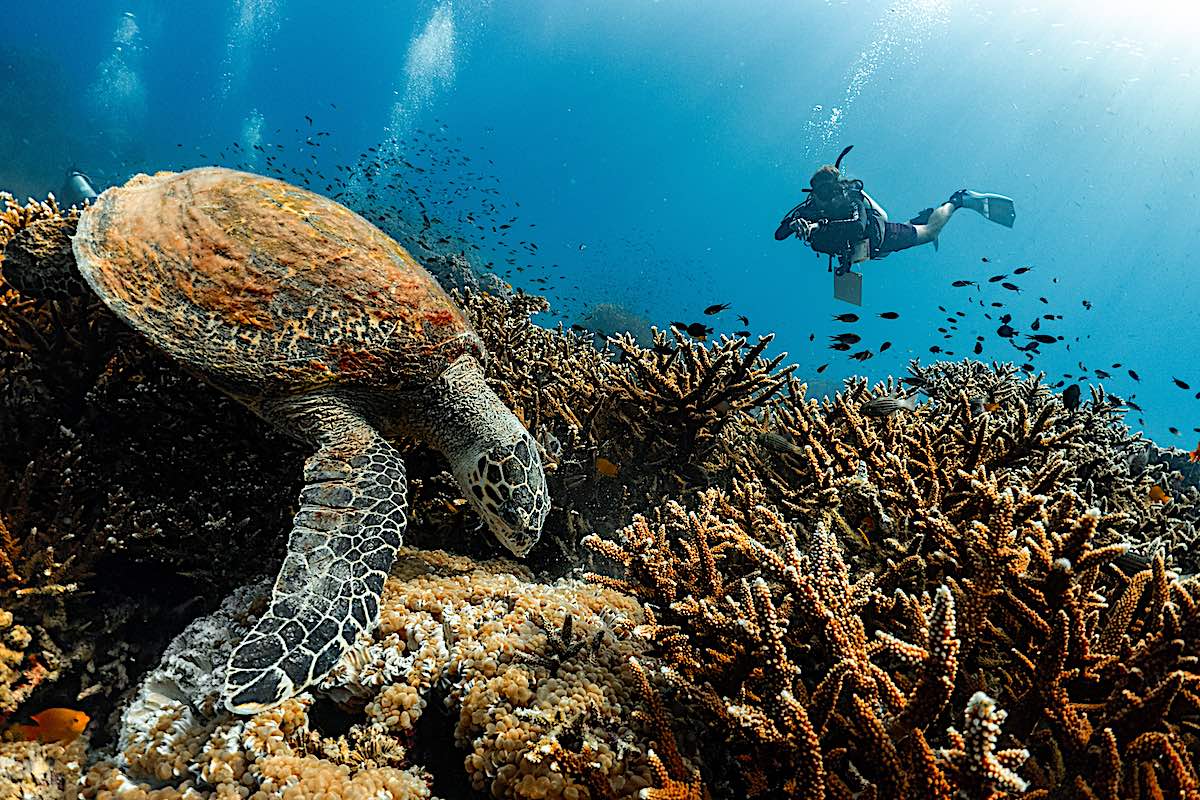
Monitoring Sea Turtle Populations
Scuba divers and snorkelers can help to be part of the solution by using their network to help identify and monitor sea turtle populations around the globe.
On Koh Tao, we post sighting photos along with data; date, time, water temp, sex, behavior, markings, depth, bottom depth on the Facebook group ‘Koh Tao Turtles’
Since the Koh Tao Turtles database started there have been 101 individual Green Turtles Identified, 64 Hawksbills and 2 Olive Ridley sea turtles.
During the Conservation Diver Sea Turtle Ecology and Monitoring course you will learn about Sea Turtle Ecology and the threats our Sea Turtles are facing.
We also teach you the techniques used around the world, to track and ID individual Sea Turtles so we can all contribute to saving our sea turtles.
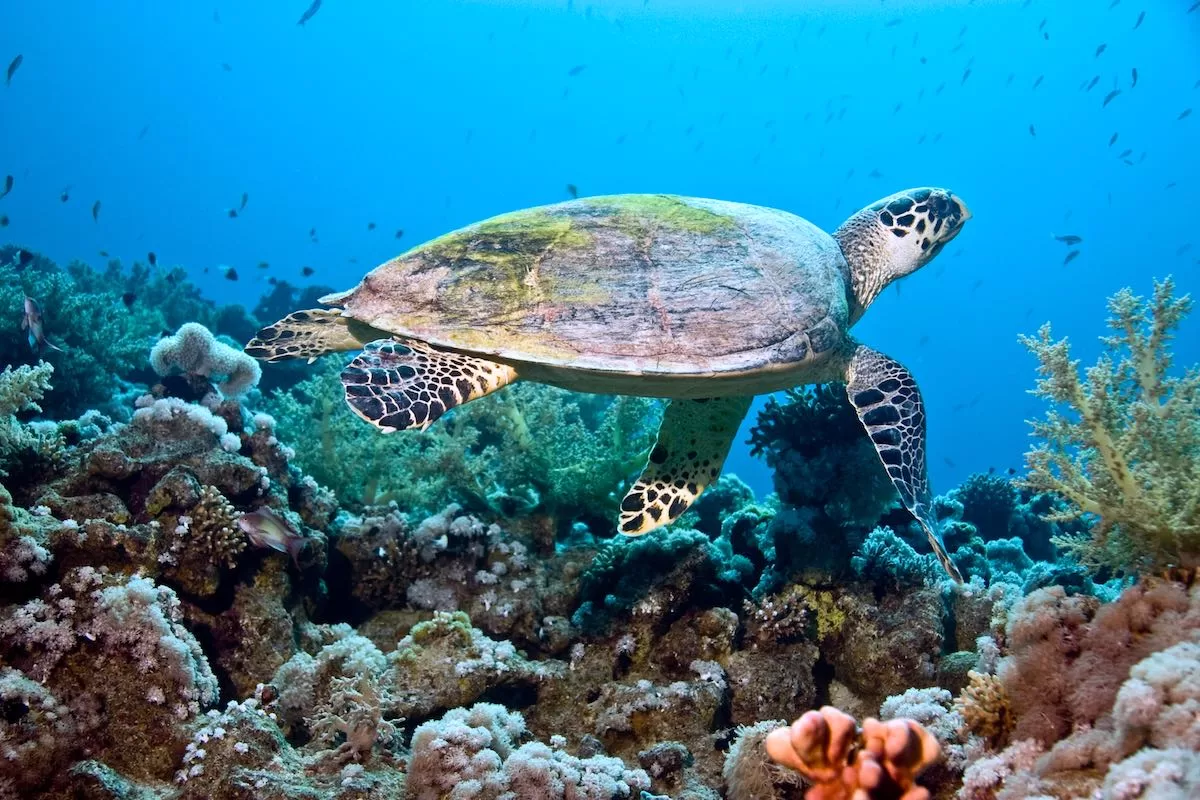
Sea Turtle Ecology – Improve Scientific Knowledge & Understanding
You can enrol on our unique Sea Turtle Ecology & Monitoring course as a snorkeler or a scuba diver and the practical session will be conducted in Open Water with the appropriate snorkeling or scuba diving equipment.
For ocean enthusiasts who wish to get more involved with marine conservation, and who are passionate about marine life and the unique ecosystem that is the coral reef, then the Conservation Diver Ecological Monitoring Program course, will help you deepen your understanding and appreciation of these subjects.
Enrolling on this course will help you develop a better understanding of the challenging future coral reefs are facing.
The Ecological Monitoring Program introduces students to coral reef ecology and teaches you how to view the reef from a scientific perspective, assessing key biotic and abiotic reef components.
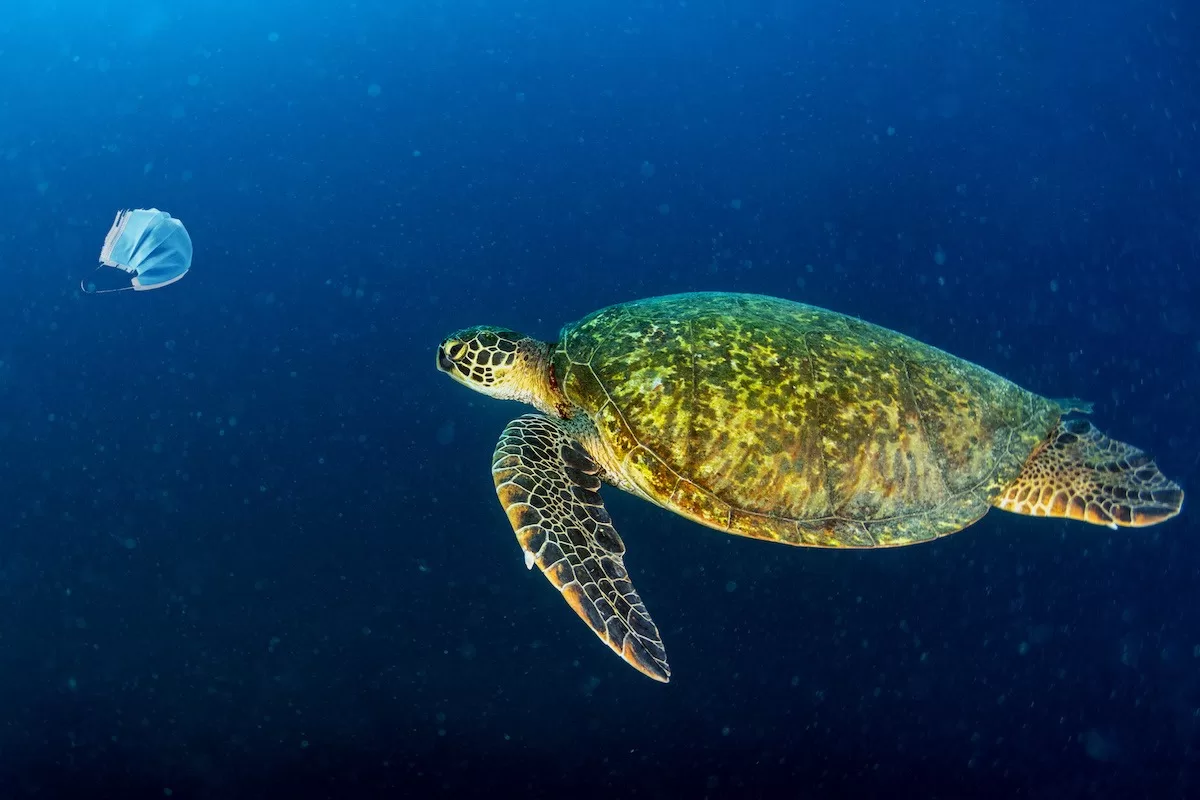
Improve your Understanding of Coral Reef Ecology
You will learn how to use scientific sampling and reef survey techniques and upon successful completion you will be certified to conduct your own reef surveys and upload your date onto the online database.
There are various criteria that you will assess including fish & Invertebrate abundance and biodiversity, substrate cover, coral identification & taxonomy, coral disease and coral bleaching.
The Ecological Monitoring Program is at the center of the Conservation Diver training, education and research program, and as such this course is a prerequisite for many of the other courses offered by Conservation Diver. The EMP course provides divers with hands on experience that can be applied to future academic or professional pursuits.
Completing this course is a rewarding and enriching experience for everyone, regardless of whether you are pursuing a career in this field or simply have a personal interest in marine life and the oceans. Those who master the skills & knowledge on the EMP course are encouraged to then go on to achieve the Advanced Ecological Program certification.
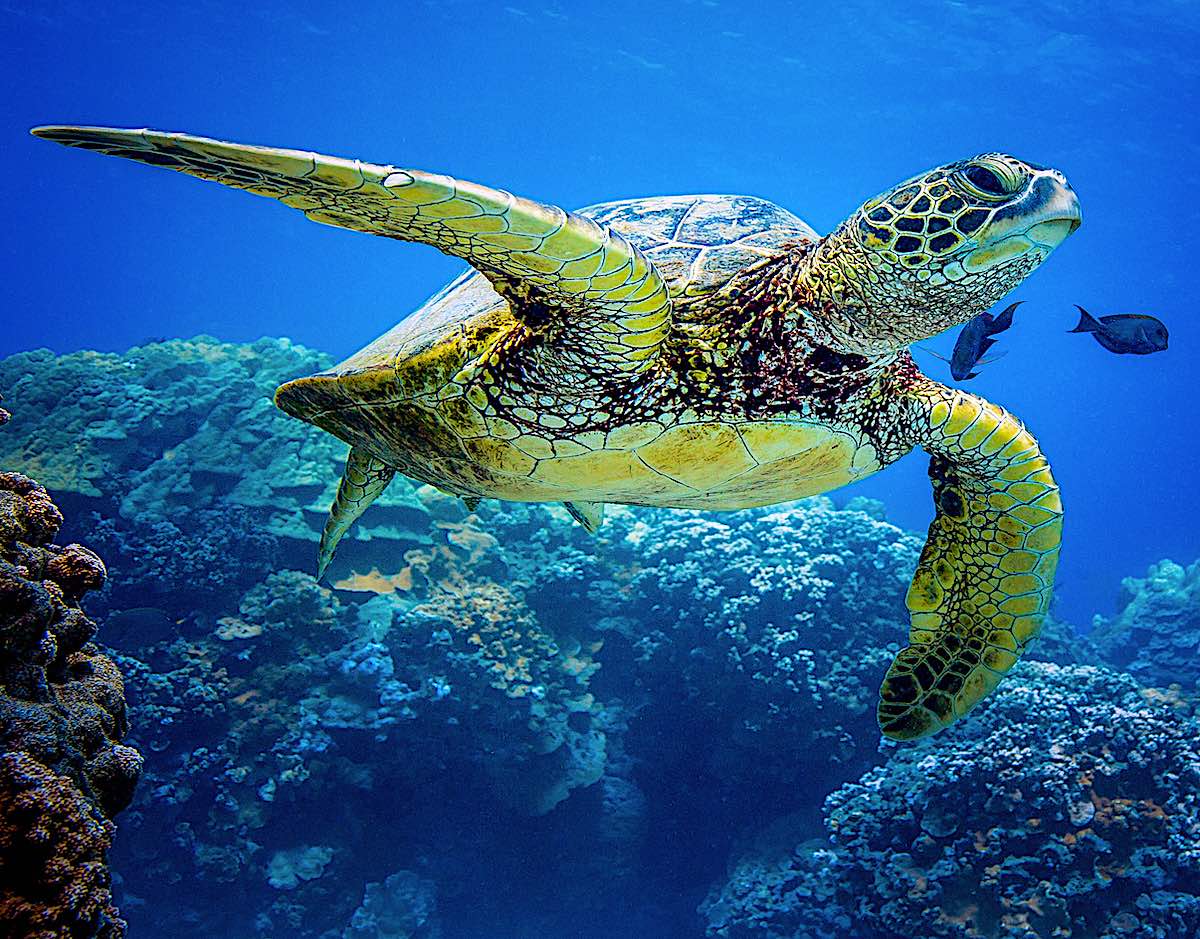
Sea Turtle Ecology Specialty Course
The Advanced Ecological Monitoring Program certification is awarded to students who show exceptional research skills.
An individual must already be an EMP diver and have completed Conservation Diver Specialty training courses in Coral Taxonomy & Identification, Coral Disease & Compromised Health and 3 other monitoring courses such as the Sea Turtle Ecology and Monitoring course or our Seahorse Ecology course.
Reef researchers and students all round the world use similar programs to collect data, meaning the Advanced Ecological Monitoring Program will help with your professional efforts too.
By increasing awareness and involvement, we can decrease our impacts on coral reefs and provide solutions to protecting and restoring the reefs around the globe and help to make a difference.
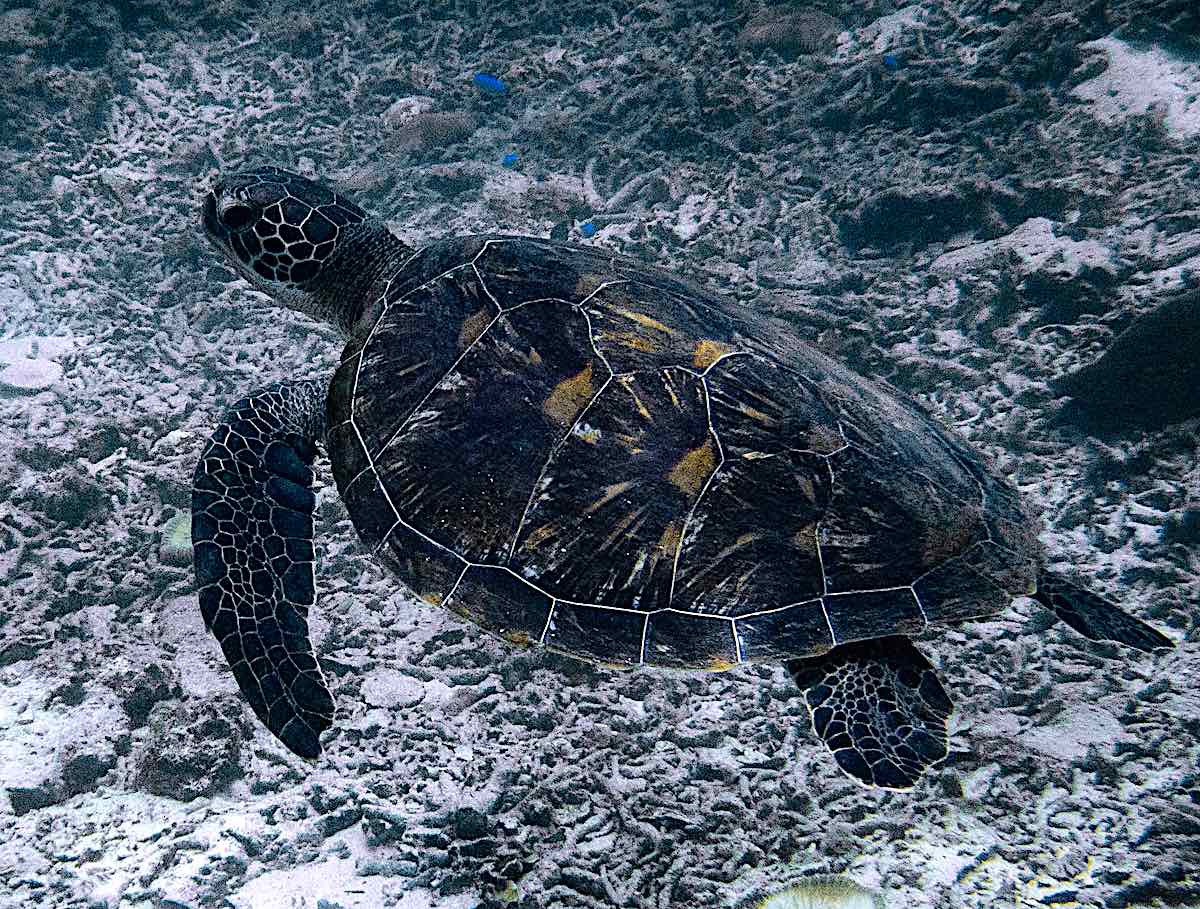
Protecting the Marine Environment
Most successful conservation and coral restoration projects have been achieved by small groups and local communities, rather than governments or policy makers and Black Turtle Dive is continuing this tradition, doing as much as we can to protect the local environment on Koh Tao.
After completing this course, students will know how to perform the reef research methods of the Ecological Monitoring Program and can continue to help with data collection.
You will gain knowledge about coral reefs and their inhabitants. Students will learn to identify indicator fish and invertebrate species and substrate types, gain experience working with equipment underwater and also practice buoyancy and navigation skills.
Once you have successfully completed the training you can assist on our monthly EMP courses, and participate in EMP courses in other areas of the world with our network of Conservation Diver Centers.
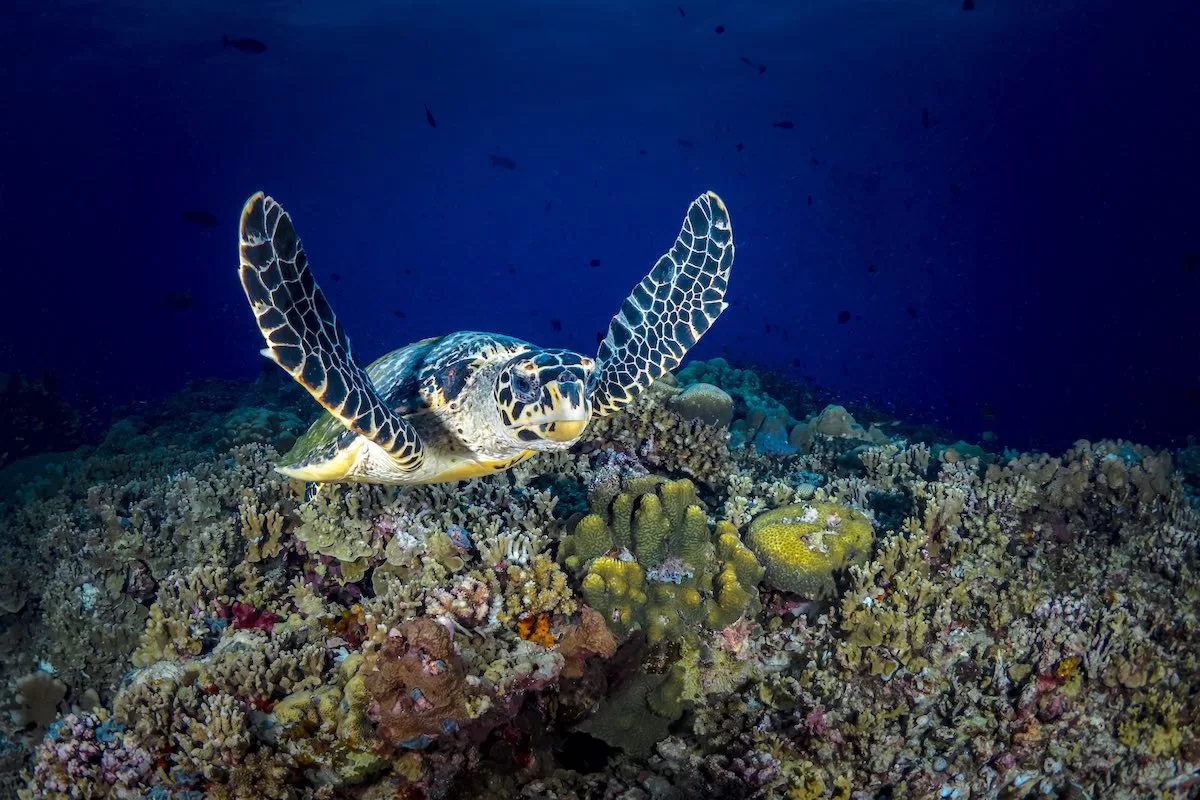
Conservation Diver Sea Turtle Ecology & Monitoring course
- 1 day program
- Snorkeling session
- Sea Turtle Ecology & Monitoring course e-learning manual
- Rental of all equipment
- FREE use of Dive Computer if required
- Black Turtle Dive Customer (and environmental) promise
To enroll on the Conservation Diver Sea Turtle Ecology & Monitoring course a diver or a snorkeler must:
- Be 12 years of age or older
- Be a competent swimmer if performing the course snorkeling
Or
- Be certified as an Advanced diver under a leading diving organization (PADI, SSI, RAID, etc) or an Open Water diver who has satisfactorily completed a buoyancy assessment with a Conservation Diver Instructor or completed a buoyancy specialty course with a leading certification organization.
All Conservation Diver Sea Turtle Ecology & Monitoring course divers must demonstrate proper diving ability at an advanced Level and be proficient in buoyancy and self-awareness.
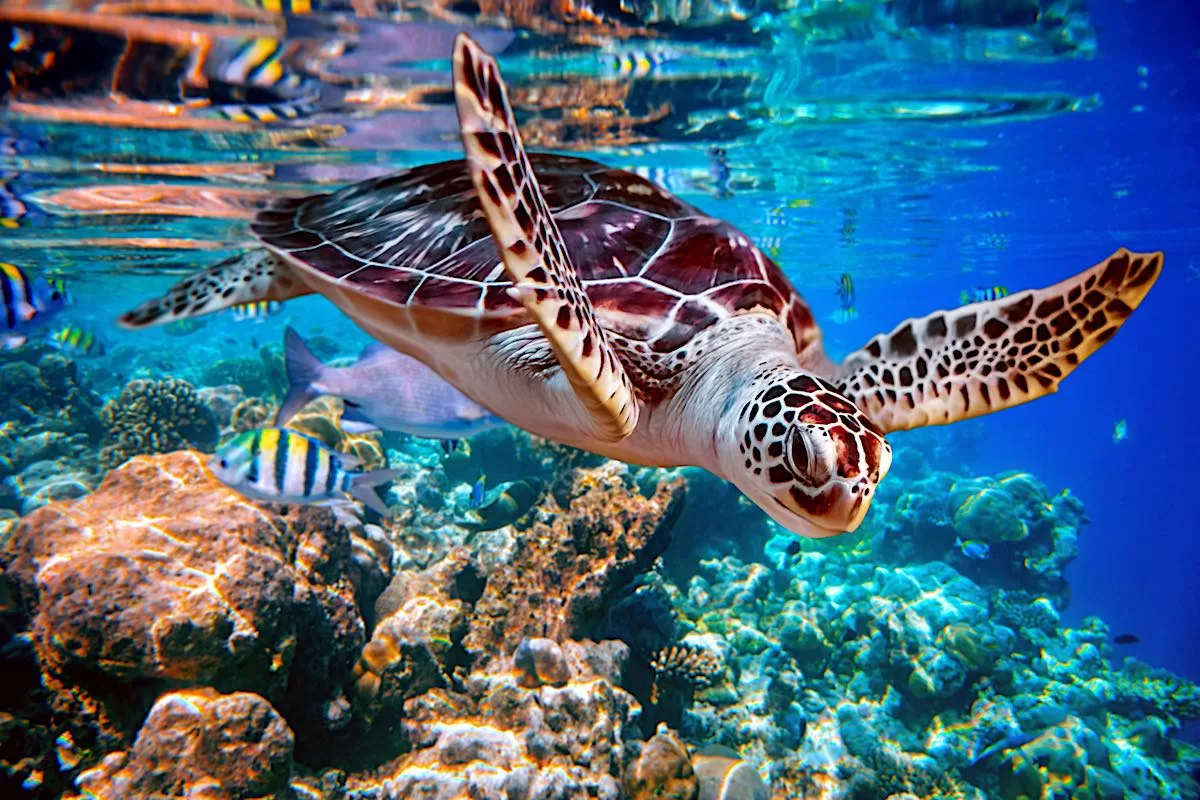
What is in the Sea Turtle Ecology & Monitoring course
- Attend the Instructor led presentation on Sea Turtle Ecology and Monitoring
- Complete the Sea Turtle Ecology and Monitoring Exam and score at least 80%
- Attend the practical briefing prior to the observation dive
- Complete at least 1 dive or snorkel to attempt to find and observe sea turtles (note: if sea turtles are not found participants can still receive the certification)
- If a sea turtle is observed, collect relevant data and photographs as per local standards
- Attend debriefing and data entry (if no turtles were found, briefing will still be given as if a sea turtle was observed to understand the ID process)
What you learn in the Sea Turtle Ecology & Monitoring course
- The ecology, evolutionary history, and threats to sea turtle populations around the globe
- You will learn how to recognize issues with sea turtles and how to mitigate local threats to their health and survival
- You will understand various techniques to identify sea turtles and track their populations using photo documentation
- You will learn how turtle sightings are coded and recorded into local databases
Knowledge Development for the course
The knowledge development section of the Sea Turtle Ecology course is divided between independent study (E-learning) and a series of in class knowledge development presentations and workshops, led by one of our Conservation Diver Instructors
The e-learning section covers the following sections and subjects: Course Standards & Requirements
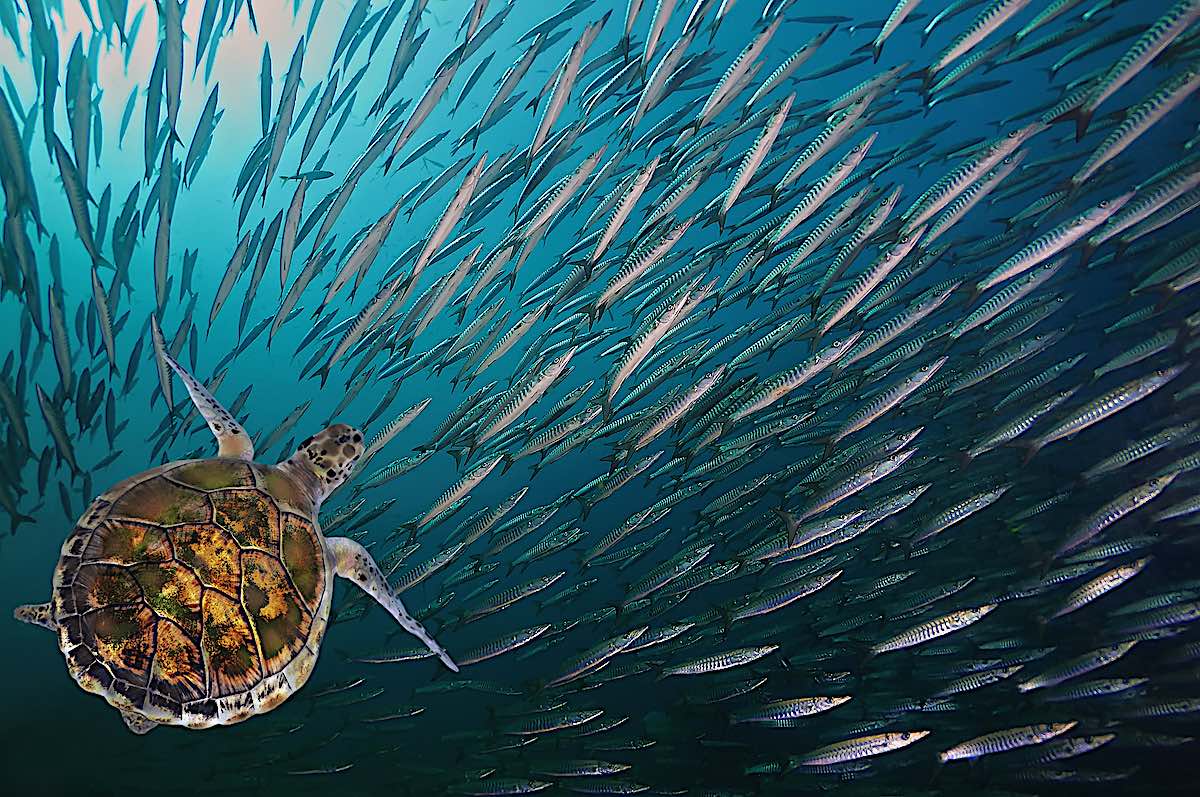
An Introduction to Sea Turtles
Evolution of Sea Turtles
- Evolution of Leatherbacks
- Evolution of Hard-Shelled Sea Turtles
Evolution of Sea Turtles Quiz
General Traits & Anatomy of Sea Turtles
- General Traits for all Sea Turtles
- Anatomy of Sea Turtles
- Life Cycle of Sea Turtles
Sea Turtle Monitoring & Anatomy Quiz
Species Identification of Sea Turtles
- Green Sea Turtle
- Hawksbill Sea Turtle
- Loggerhead Sea Turtle
- Kemp’s Ridley Sea Turtle
- Olive Ridley Sea Turtle
- Flatback Sea Turtle
- Leatherback Sea Turtle
Species Identification Quiz for Sea Turtles
Importance of Sea Turtles
- Ecological Importance of Sea Turtles
- Economic Importance of Sea Turtles
- Cultural & Religious Importance of Sea Turtles
Threats & Status of Sea Turtles
- General Threats to Sea Turtles
- Location & Species-Specific Threats
Monitoring and Identification of Sea Turtles
- Professional Sea Turtle Monitoring; Data & Technology
- Citizen Science based monitoring
- How to photo document Sea Turtles
- Reporting Data
Other Ways to help Sea Turtles
Final Exam for Sea Turtles
We recommend that you complete all independent eLearning before you start the Sea Turtle Ecology & Monitoring course.
However, if you are signing up late, or have been unable to complete this section prior, we will give you a homework schedule that assures you complete prerequisite study for subsequent presentations and workshops that we will be doing throughout the course.
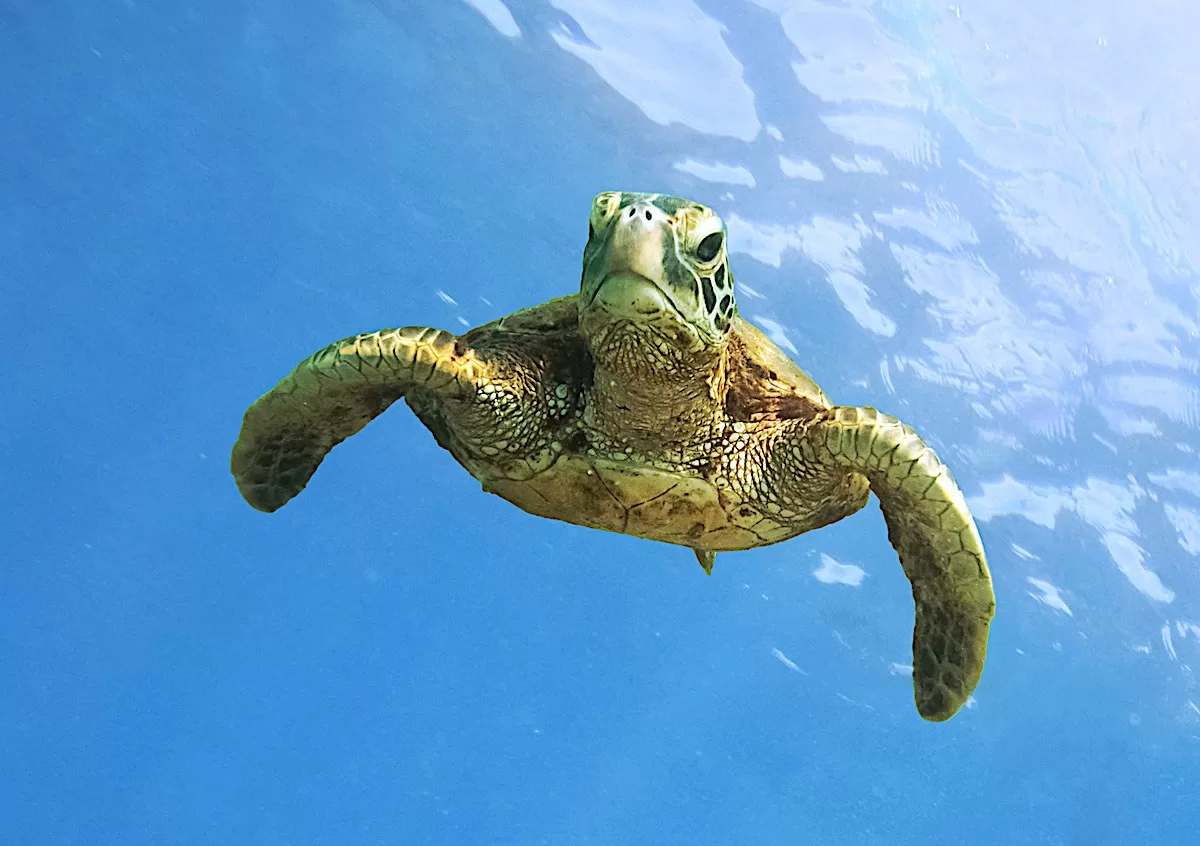
Knowledge Development Presentations & Classroom Workshops
- Orientation
- Sea Turtle Ecology and Monitoring Presentation
- Complete the Sea Turtle Ecology and Monitoring Exam and score at least 80%
Water Skills Development & In-water Workshops
- Attend the practical briefing prior to the observation dive
- Complete at least 1 dive to attempt to find and observe sea turtles
- If a sea turtle is observed, collect relevant data and photographs as per local standards
- Attend debriefing and data entry
Completing the Sea Turtle Ecology & Monitoring course
- Complete all e-Learning modules
- Attend the Instructor led knowledge development presentation Sea Turtle Ecology & Monitoring
- Complete the Sea Turtle Ecology and Monitoring Exam and score at least 80%
- Attend the practical briefing prior to the observation dive /snorkel
- Understand the Sea Turtle ‘Code of Conduct’
- Participate in the observation dive /snorkel
- If a sea turtle is observed, collect relevant data and photographs as per local standards
- Attend debriefing and data entry (if no turtles were found, briefing will still be giving as if a turtle was observed to understand ID process)
- Enter data onto data sheets or into the online database
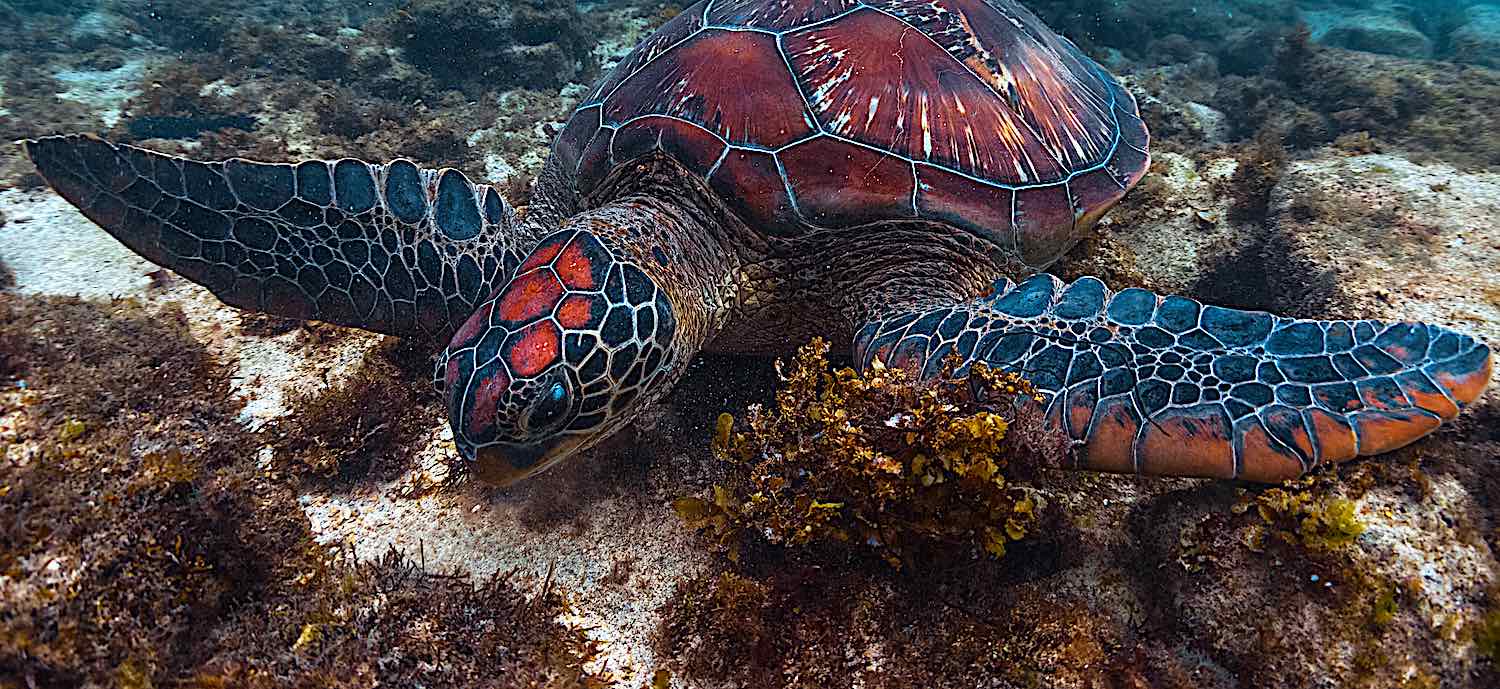
Cost of Sea Turtle Ecology and Monitoring course
Black Turtle Dive takes its customer promise very seriously and we wish to pass on our passion for the ocean to our customers, and offer the highest quality in safety, training and service.
The marine conservation program at Black Turtle Dive was launched in 2022, having evolved out of Eco Koh Tao, one of the longest running environmental organisations on the island.
Eco Koh Tao was founded by Nathan Cook, a master of Marine Science from Southern Cross University, Australia and Matt Bolton, a PADI Course Director who first brought Reef Check to the island in 2007 and founded Black Turtle Dive.
Eco Koh Tao planned and developed Junkyard Reef, Koh Tao’s first and arguably one of the most successful artificial dive sites.
This work started in 2006 and continues to this day and Junkyard Reef hosts thousands of Open Water training dives every year, taking pressure off existing natural dive sites around Koh Tao.
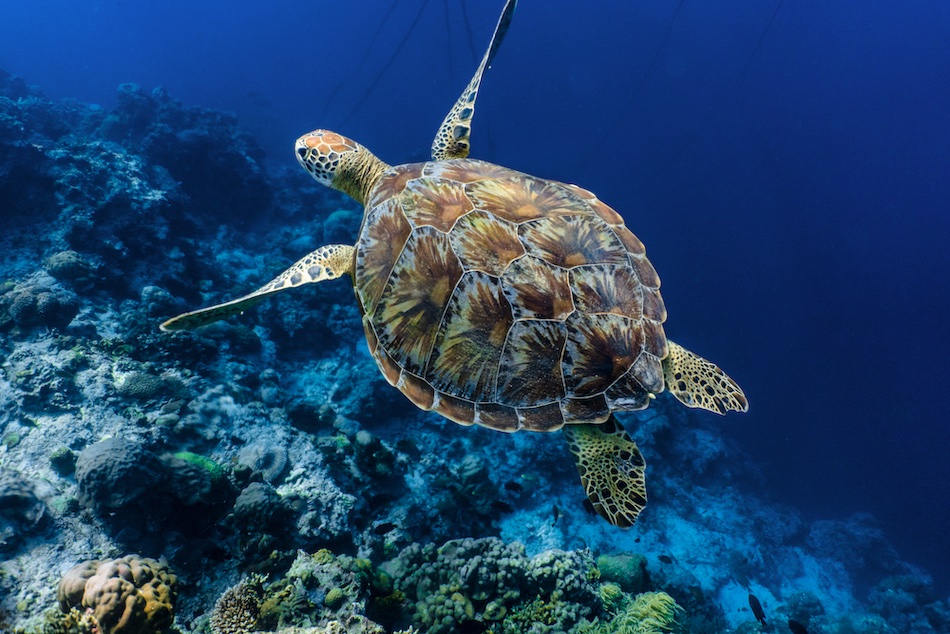
Artificial Dive Sites on Koh Tao
Eco Koh Tao has also worked hard over the years monitoring reef health and being involved in multiple restoration projects. This work included being an integral part of the Save Koh Tao organization that spearheaded Buoyancy World, an island wide initiative to develop a second artificial reef in 2009.
Black Turtle Conservation symbolises the unification of Koh Tao’s two original ocean researchers, Nathan and Chad Scott. Chad founded Conservation Diver on Koh Tao in 2014, following 6 years of development work at his NHRCP program.
Conservation Diver is now a world leader in marine conservation education and has certified thousands of ocean enthusiasts over the past decade.
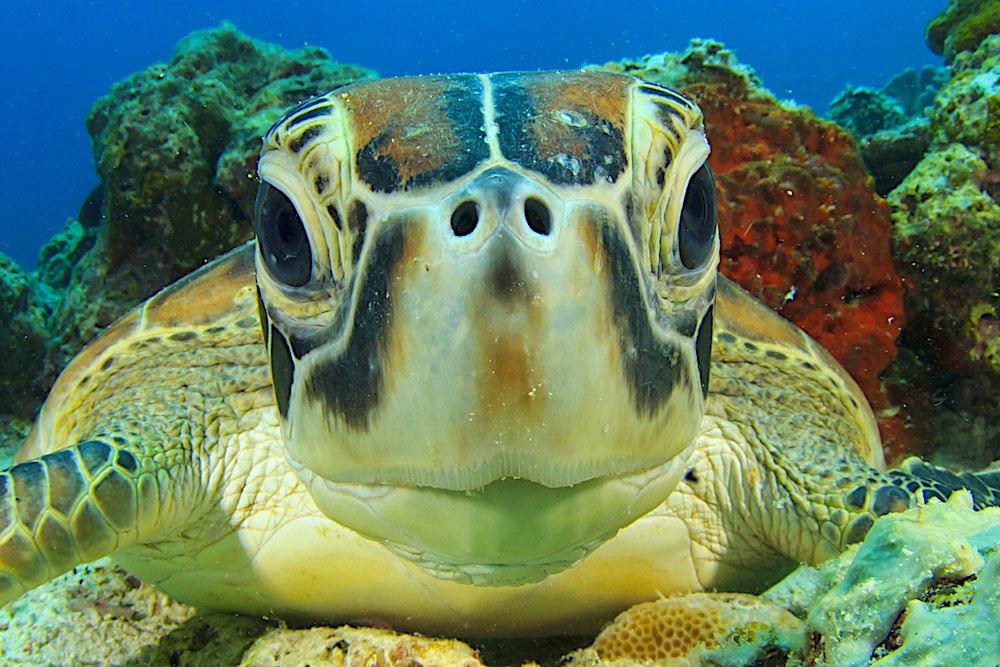
Reef Ecology And Conservation Training program (REACT)
Eco Koh Tao and NHRCP worked towards mutual goals for many years, but it is with this program at Black Turtle Dive that finally their deep local knowledge and global conservation vision has been combined to form what we believe is the best-in-class Reef Ecology And Conservation Training program (REACT).
The Conservation Diver global network extends across 11 locations, with 50+ instructors, teaching over 35 different marine science courses, bound together in the mission to train the next generation of marine conservationists.
Black Turtle Conservation in Thailand
Black Turtle Conservation are proud to be part of this shared vision. By working together in this way, we are able to benefit from data collaboration and the vast knowledge shared between a large group of experts in varying fields.
No other network in the world exists that connects conservation programs in such a way, which gives our students the benefit of being part of a movement of research and conservation much bigger than one single program of work.
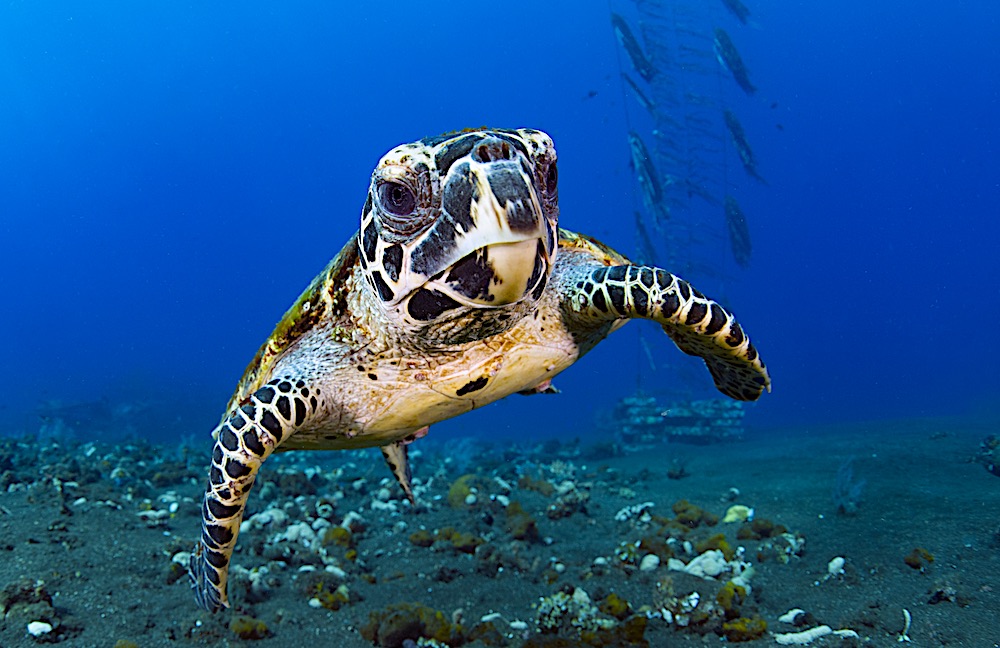
Sea Turtle Ecology and Monitoring Course Schedule
Sea Turtle Ecology and Monitoring course is scheduled over one day.
Day 1
- Orientation
- Sea Turtle Ecology and Monitoring course presentation
- LUNCH
- Observation dives and / or snorkel
- Post any sightings photos and data; date, time, water temp, sex, behavior, markings, sighting depth, bottom depth to the Koh Tao Sea Turtle Facebook Group
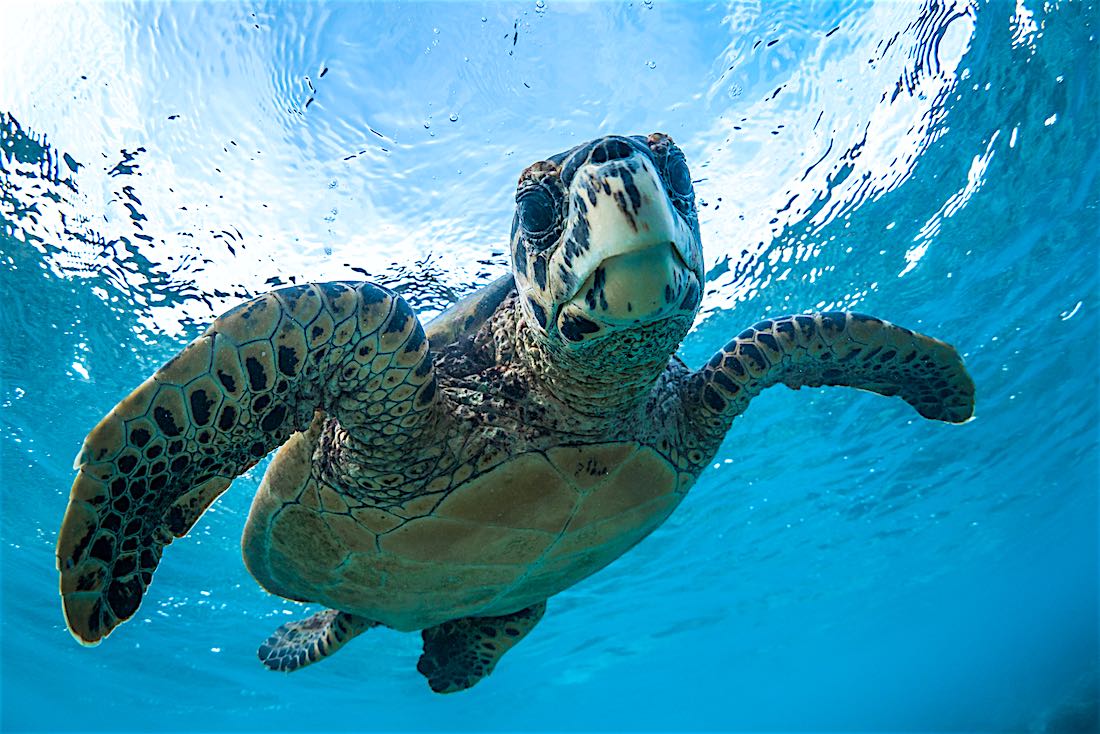
Sea Turtle Ecology and Monitoring Course Information
Sea Turtle Ecology and Monitoring course – Orientation & Knowledge Development. As soon as you sign up, we will send you the Sea Turtle Ecology and Monitoring e-learning manual.
Once you have redeemed your access code you can start working your way through the e-learning sections, as we recommend you complete this prior to Day 1 of the course.
You will start the Sea Turtle Ecology and Monitoring with your course Orientation.
This includes completing all required paperwork; Release of Liability/Assumption of Risk/ Non-agency Disclosure & Acknowledgment Form, Student survey, Student Responsibilities agreement, Scientific Diving Acknowledgment Agreement, Standard Safe Diving Practices Statement of Understanding and Medical Statement (RSTC Medical form).
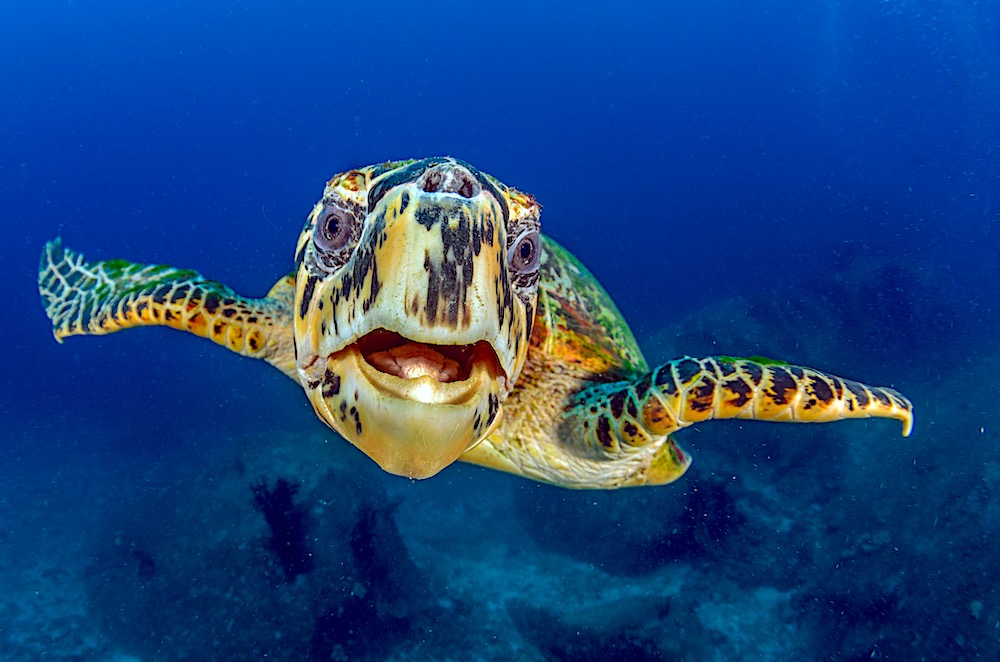
Sea Turtle Ecology & Monitoring Course eLearning
As you can see from the schedule above the Sea Turtle Ecology and Monitoring e-learning knowledge development comprises of 9 modules. Each module has a corresponding e-learning section. Ideally this would be completed before the instructor led presentation.
The instructor led knowledge development sessions are integrated into the schedule to precede the corresponding ‘in water’ skill development and observation dives/snorkel. Additional dive and theory reviews and feedback are scheduled outside of the schedule, as and when required with each individual candidate.
You will be given the exam after you have successfully completed the corresponding classroom presentation and survey dive. Alternatively, you can complete the final exam prior to certification.
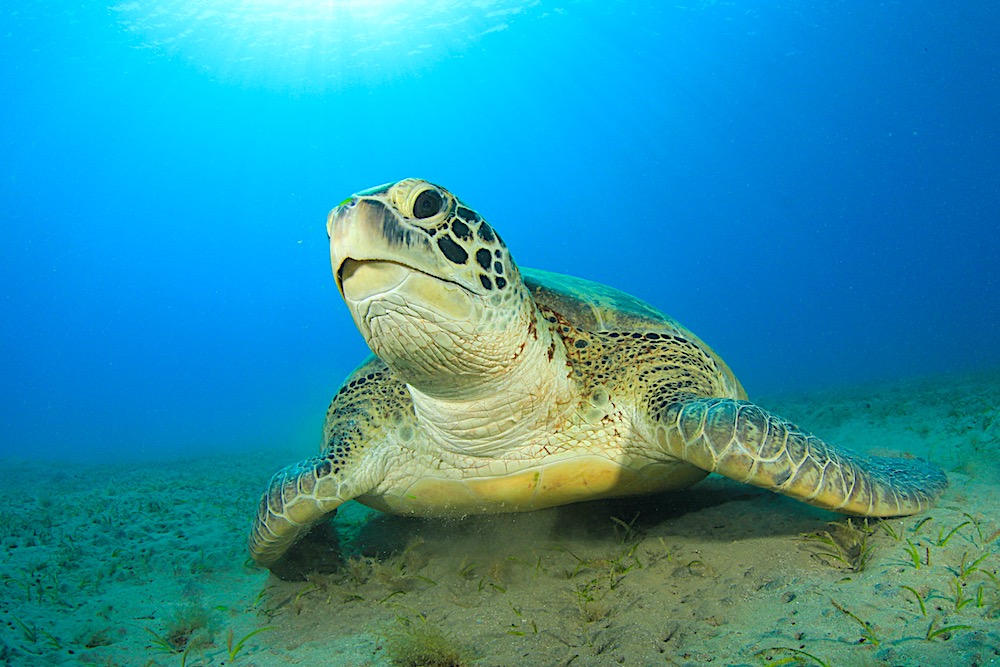
Buoyancy Assessment for Scientific Diving
Prior to all Conservation Diver training courses candidates must satisfactorily complete a buoyancy assessment with a Conservation Diver Instructor.
This includes being able to swim slowly with legs elevated to avoid damaging the reef with head in the down position.
You must be able to record data on an underwater slate whilst keeping an eye on the reef, maintaining buoyancy and not touching the reef either with any part of your body or equipment.
You should also be able to maneuver easily in a manner that avoids any disturbance of the reef.
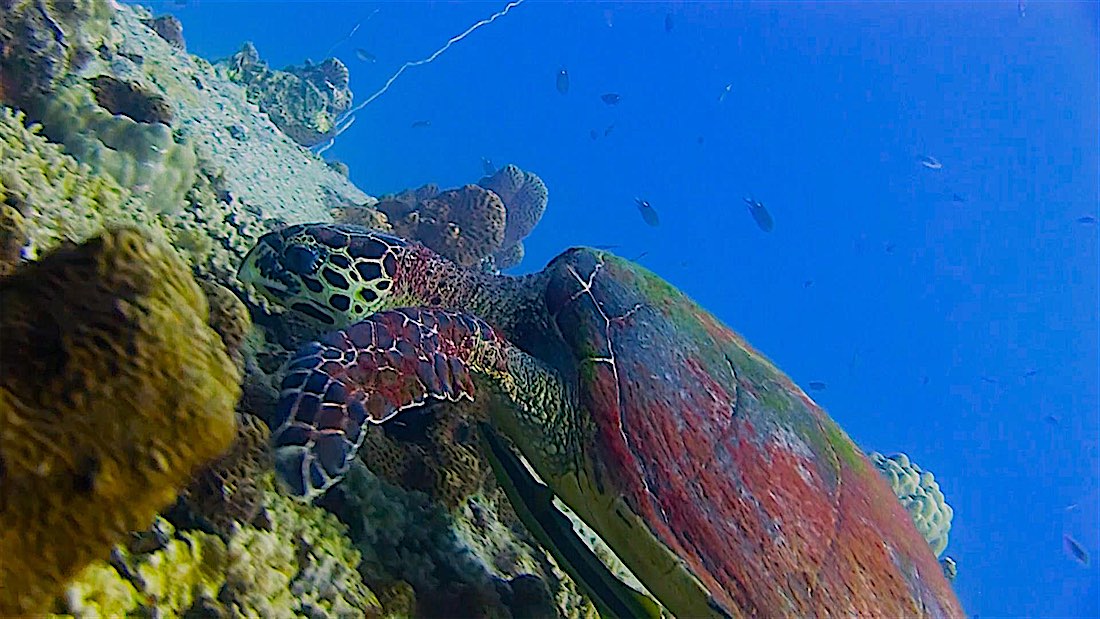
Sea Turtle Observation dive
The best option for our Sea Turtle Observation and monitoring dive is to go to Shark Bay on the south east of Koh Tao, for an extended snorkeling session in Open Water.
We regularly see Green and Hawksbill Turtles at Shark Bay, which makes this site ideal for students studying the Conservation Diver Sea Turtle Ecology and Monitoring course.
We start by reviewing the ‘Sea Turtle Code of Conduct’ to familiarise ourselves with the ‘No Approach zone’. At all times we must stay at least 1 metre away from any sea turtles we see.
Other important points to review as a group prior to making the dive are no flash photography, no touching, and no swimming above the sea turtle. We must always be vigilant and avoid blocking the Sea Turtle and of course absolutely NO harassing.
Our Objective is to take photos of both sides of the Sea Turtles head. We can then post these photos in the Koh Tao Sea Turtle group along with ecological data such as date, time, water temp, sex, behavior, markings, sighting depth and bottom depth.
Contact us to book your place on our Sea Turtle Ecology & Monitoring course.
BOOK NOW 6,000 baht
Sea Turtle Ecology & Monitoring course in Thailand
Frequently Asked Questions
What is the cost of the Sea Turtle Ecology & Monitoring course?
The cost of the Sea Turtle Ecology & Monitoring course is 6,000 baht per person. Included within this cost is all equipment rental, your Conservation Diver Instructor, insurance, your Sea Turtle Ecology & Monitoring e-learning manual and the practical observation dive or snorkel.
This represents fantastic value for a 1-day science-based specialty course that introduces students to the ecology and evolutionary history of sea turtles, and threats to sea turtle populations around the world.
What is the minimum age for the Sea Turtle Ecology & Monitoring course?
The minimum age to sign up for the Sea Turtle Ecology & Monitoring course is 12 years of age.
If completing this course on scuba additional prerequisites include being an Advanced diver and/or a Buoyancy assessment prior to starting the Sea Turtle Ecology & Monitoring course is required.
If completing the observation dives whilst snorkeling then a swimming appraisal is required to ensure students are proficient swimmers and can control themselves underwater around Sea Turtles.
What is the Sea Turtle Ecology & Monitoring course?
The Conservation Diver Sea Turtle Ecology & Monitoring course introduces students to Sea Turtle ecology and their evolutionary history.
The course goes more into depth, discussing the myriad of threats sea turtle populations around the globe are currently facing and how we can help to mitigate these.
You will learn techniques we use to identify sea turtles, how to track their movements using photography and how we record sea turtle sightings in local databases.
The Sea Turtle Ecology & Monitoring course provides great value, whether you are a scuba diver interested in these beautiful creatures for your own enjoyment, or for those that are looking at studying marine science in greater detail.
How long is the Sea Turtle Ecology & Monitoring course for?
The Sea Turtle Ecology & Monitoring course is scheduled over 1-day and includes observation dives or an extended snorkel session at Shark Bay on Koh Tao.
Upon successful completion of all performance requirements students will earn the Conservation Diver Sea Turtle & Monitoring certification. Prior to arrival Students can complete e-learning, then participate in the instructor led presentation.
The knowledge development is followed by a practical in-water session at Shark Bay where you will apply the knowledge you learn, to identify different species of sea turtles.
Can you take a Sea Turtle Ecology & Monitoring course in Thailand?
The Sea Turtle Ecology & Monitoring course is conducted on Koh Tao, Thailand by Black Turtle Dive, an official Conservation Diver Training center that offers a full curriculum of Scientific based courses.
The marine conservation course is a specialty course for aspiring marine scientists, researchers and for students who want practical field experience and to gain a certification.
